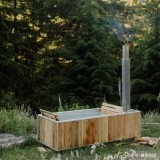
must后面要加原型,因为must是情态动词。情态动词后面都加动词的原形。
must的用法:1、加动词原形,若出现must to be done的话,就是表示被动,意为“必须被做……”;2表必须;3、在否定结构中表不许;4、表坚定的建议;5、在肯定句中,表推测,暗含有很大的可能性。
must 是情态动词,“必须”。must加动词原形。
用法:
must 后跟动词原形;其否定式是mustn't;其疑问句式是把must 提前到主语前面。
must 开头的一般疑问句做肯定回答时,用Yes, ... must. ;否定回答时,用No, ... needn’t/don’t have to.。
如:
I must go to work today.
I mustn’t go to work today.
Must you go to work today? —-Yes, I must./ No, I needn’t(=I don’t have to).













